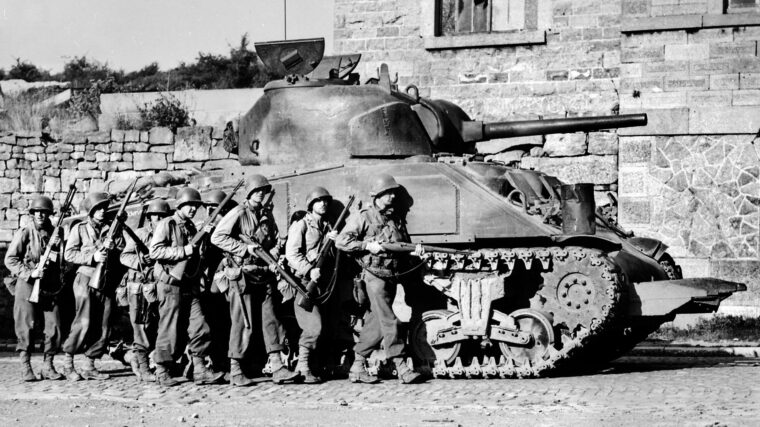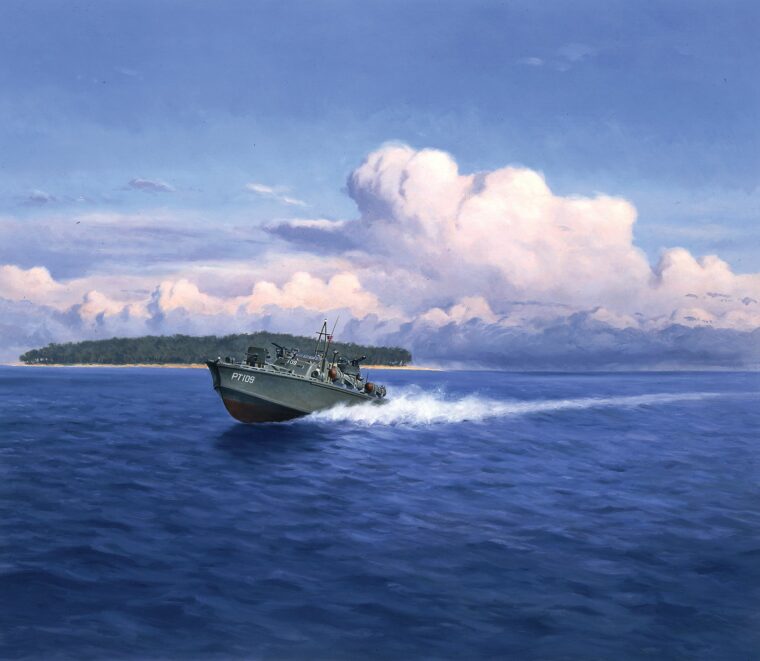
WWII
Matt Urban: Infantry Legend
By Michael D. HullAt a Washington, D.C., reunion of the 9th Infantry “Octofoil” Division, on Saturday, July 19, 1980, President Jimmy Carter presented the nation’s highest decoration for valor to Lt. Read more


WWII
At a Washington, D.C., reunion of the 9th Infantry “Octofoil” Division, on Saturday, July 19, 1980, President Jimmy Carter presented the nation’s highest decoration for valor to Lt. Read more

WWII
There is no disputing that radar played a major role in the Allied victory in World War II. Read more

WWII
In the midst of the ambitious Operation Market-Garden, Brigadier General James M. Gavin, 82nd Airborne Division Commander, first heard about the crisis at Mook, along the Maas River, from his chief of staff, Lt. Read more

WWII
Though neutral for most of it, few countries had such a Passage through World War II as did Bulgaria. Read more

WWII
To those that met him, Lieutenant General Arthur Percival was uninspiring and gloomy, seeing difficulties rather than opportunities; one who was weak and hesitant when a decision was needed. Read more

WWII
On November 3, 2011, at 0945, the hydrographic ship HMNZS Resolution discovered what appeared to be an aircraft in the waters near Gavutu Island in the Solomon Island group. Read more

WWII
The Fifth U.S. Army was in trouble and dropping 600 paratroops at Avellino to disrupt the communications of the 16th Panzer Division seemed like a sound solution. Read more

WWII
By Christopher Miskimon
Full ReviewsTo the End of the Earth: The US Army and the Downfall of Japan, 1945 (John C. Read more

WWII
The celebrated life of President John F. Kennedy has been recounted many times in the decades since he assumed the highest office in the land. Read more

WWII
Lieutenant Commander Shigeru Itaya, sitting in his gray Mitsubishi A6M2 Zero, led two other fighters on another strafing run on the parking ramps and hangars of Hickam Army Air Base on Oahu. Read more

WWII
Actor and filmmaker Tyler Perry knows a great story when he comes across one. And when he read Kevin Hymel’s dramatic narrative of the 6888th Central Postal Battalion in the pages of WWII History magazine, he knew it was something special. Read more

WWII
For the United States Army, the long road to Germany began in the mountainous deserts of Tunisia in mid-November 1942. Read more

WWII
The desert sky lit up like a summer lightning storm on the night of December 31, 1941. The distant thunder of hundreds of guns rolled across the sandy, stony ground. Read more

WWII
When Adolf Hitler became chancellor of Germany on January 30, 1933, the world changed forever.
Not only was Hitler determined to pay back Germany’s enemies for his country’s defeat during the Great War, but he was also determined to rid Germany and the rest of Europe of persons whom his twisted Aryan ideology believed were “inferior” or “subhuman.” Read more

WWII
It was May 23, 1945, roughly a year before the execution of Julius Streicher, founder and publisher of the vilest anti-Semitic Nazi propaganda of the war. Read more

WWII
For centuries wounded soldiers of every nation were responsible for much of their own care. Medical attention was primitive and often not a high priority for military planners beyond the officer corps. Read more

WWII
On the morning of Friday, April 13, 1945, three men gathered at a table in L’Espadon of the Ritz Paris over a breakfast of coffee and croissants. Read more

WWII
Major General John K. Singlaub was a young airborne lieutenant when he took up an offer from the Office of Strategic Services (OSS) to become engaged in “hazardous duty behind enemy lines.” Read more

WWII
They have been called “the other Navy,” the “Navy’s stepchildren,” and perhaps most fittingly, “the forgotten Navy.” Officially, however, they were the Naval Armed Guard or more simply the Armed Guard (AG). Read more

WWII
At 2:43 pm on October 24, 1944, one day before the Battle of Surigao Strait, Rear Admiral Jesse B. Read more